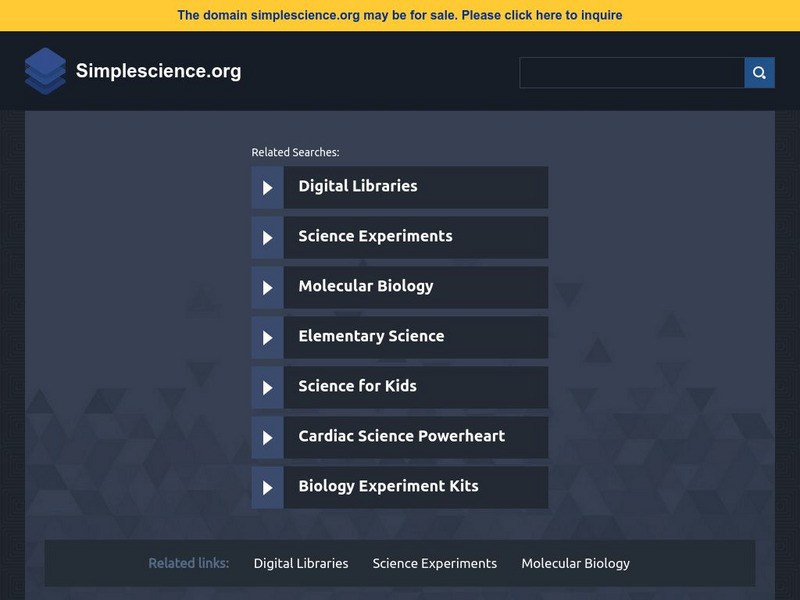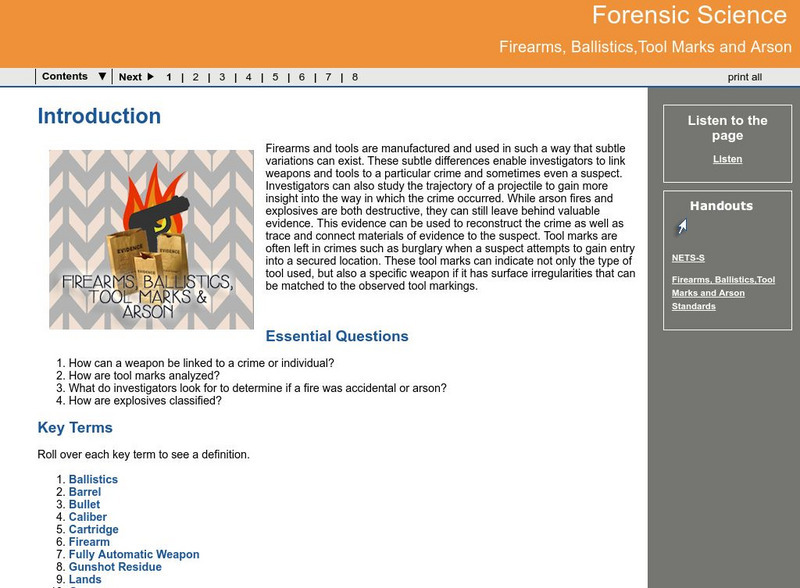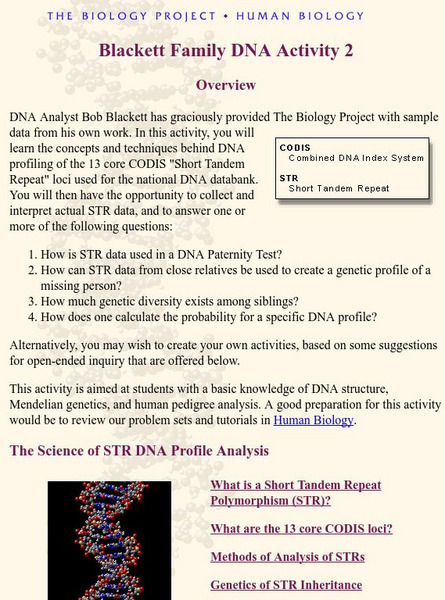Curated OER
The Visible Spectroscopy Expert Witness Problem
In a simulated crime science investigation, chemistry or physics sleuths use spectroscopy to analyze solutions. The lesson gives learners practice making salicylate solutions, using spectrophotometers, calculating dilution amounts,...
University of Colorado
Patterns and Fingerprints
Human fingerprint patterns are the result of layers of skin growing at different paces, thus causing the layers to pull on each other forming ridges. Here, groups of learners see how patterns and fingerprints assist scientists in a...
Curated OER
Drug Analysis Using Thin-Layer Chromatography
Students use forensic science to positively identify any suspected drugs submitted to the laboratory. They determine the identity of the drugs found in the bodies of drug-overdose victims. Students use TLC to identify the active...
Curated OER
The Case of Similar Substances
Middle schoolers perform tests in the lab to identify an unknown substance. In this physical science lesson, students observe the physical and chemical properties of substances. They formulate a conclusion based on experimental results.
Curated OER
Mission Possible
Learners, in teams, solve a crime using forensic lab techniques. They apply lab techniques to a real life situation using a crime scenario that takes place on campus. Sample activities include Blood, Fiber, and Hair Lab.
Curated OER
Who Took Jerell's iPod?
High schoolers investigate various substances to determine the perpetrator of a crime. In this biology lesson plan, students test for the presence of organic compounds in various samples. They identify an unknown substance based on its...
Curated OER
Forensic Detectives: Who Did It?
Students explore forensic science and its uses in criminal investigations. They solve a fictional crime by identifying and analyzing the fingerprints, strand of hair, and thread samples for evidence. After completing charts for each,...
Curated OER
America's Stone Age Explorers
Pupils research how mitochondrial DNA is used in determining familial relationships. They complete a worksheet in which they attempt to help solve the identity of bones found in Africa.
Science Education Resource Center at Carleton College
Serc: Chromatography: Who Wrote the Note?
Students investigate who stole the class pet by testing the chromatograph of different markers as a way to find the evidence that points to the perpetrator.
Other
Simple Science: Cyber Sleuth
The interactive tutorial examines properties of digital images as they relate to forensic science. Learners classify and measure hair samples to determine the suspect most likely to have been at the crime scene. The resource has an...
Georgia Department of Education
Ga Virtual Learning: Forensic Properties of Glass and Soil Evidence
In this comprehensive interactive tutorial you will investigate the area of forensic science and how the various types of evidence differ. Learn what types of crimes involve glass and soil and what ways these types of evidence are...
Georgia Department of Education
Ga Virtual Learning: Firearms, Ballistics,tool Marks and Arson
In this interactive tutorial you will learn how firearms and tools are manufactured and used in such a way that subtle variations can exist. These subtle differences enable investigators to link weapons and tools to a particular crime...
Georgia Department of Education
Ga Virtual Learning: Handwriting Analysis and Computer Forensics
In this interactive tutorial you will learn about a branch of forensic science known as computer forensics. This branch involves the scientific examination and analysis of data held on, or retrieved from, computer storage media in such a...
University of Arizona
The Biology Project: Human Biology: Blackett Family Dna Activity
Family studies are a good way to learn about DNA profiling and RFLP analysis because students can follow the inheritance of DNA markers from one generation to the next. Students have the opportunity to do this in this activity.
University of Arizona
The Biology Project: Human Biology: Blackett Family Dna Activity 2
In this activity, students learn the concepts and techniques behind DNA profiling of the national DNA databank. Students will then have the opportunity to collect and interpret actual STR data, and to answer one or more questions.
Science Buddies
Science Buddies: The Case of Mistaken Identity
Mysteries and detective stories have been popular since the time of Sherlock Holmes. The solutions to these fictional cases often involve untangling seemingly contradictory evidence from eyewitnesses. This project studies one procedure...

















